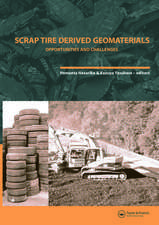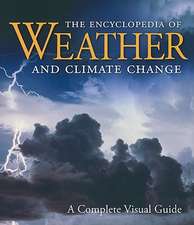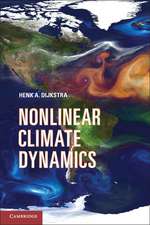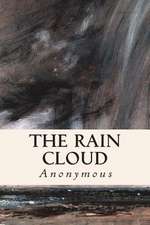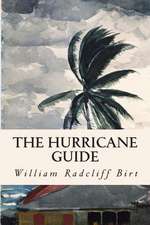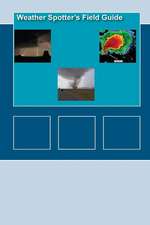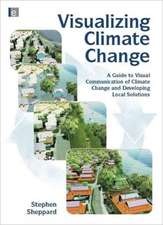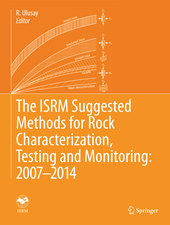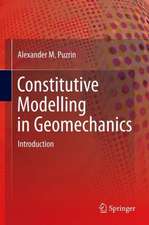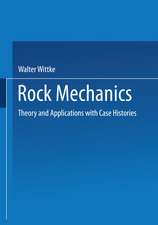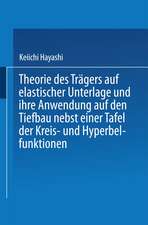Geotechnical Hazards from Large Earthquakes and Heavy Rainfalls
Editat de Hemanta Hazarika, Motoki Kazama, Wei F. Leeen Limba Engleză Hardback – sep 2016
The contents of this book focus on geotechnical and natural hazard-related issues in Asia such as earthquakes, tsunami, rainfall-induced debris flows, slope failures, and landslides. The book contains the latest information and mitigation technology on earthquake- and rainfall-induced geotechnical natural hazards. By dissemination of the latest state-of-the-art research in the area, the information contained in this book will help researchers, designers, consultants, government officials, and academicians involved in the mitigation of natural hazards. The findings and other information provided here is expected to contribute toward the development of a new chapter in disaster prevention and mitigation of geotechnical structures.
| Toate formatele și edițiile | Preț | Express |
|---|---|---|
| Paperback (1) | 1234.00 lei 6-8 săpt. | |
| Springer – 14 iun 2018 | 1234.00 lei 6-8 săpt. | |
| Hardback (1) | 1240.47 lei 6-8 săpt. | |
| Springer – sep 2016 | 1240.47 lei 6-8 săpt. |
Preț: 1240.47 lei
Preț vechi: 1512.77 lei
-18% Nou
Puncte Express: 1861
Preț estimativ în valută:
237.44€ • 257.100$ • 199.58£
237.44€ • 257.100$ • 199.58£
Carte tipărită la comandă
Livrare economică 21 aprilie-05 mai
Preluare comenzi: 021 569.72.76
Specificații
ISBN-13: 9784431562030
ISBN-10: 4431562036
Pagini: 325
Ilustrații: XXIII, 636 p. 557 illus., 417 illus. in color.
Dimensiuni: 155 x 235 x 37 mm
Greutate: 1.1 kg
Ediția:1st ed. 2017
Editura: Springer
Colecția Springer
Locul publicării:Tokyo, Japan
ISBN-10: 4431562036
Pagini: 325
Ilustrații: XXIII, 636 p. 557 illus., 417 illus. in color.
Dimensiuni: 155 x 235 x 37 mm
Greutate: 1.1 kg
Ediția:1st ed. 2017
Editura: Springer
Colecția Springer
Locul publicării:Tokyo, Japan
Cuprins
Initial Trigger for Slope Failures in Volcanic Ash Layer of Hillside Surface in Izu-Oshima Island in Japan due to a Typhoon Rainfall in 2013.- A Case Study on Silty Sand Liquefaction.- Bearing Capacity of Breakwater Mound under Tsunami-induced Seepage Flow.- Verification of improvement effectiveness by compaction methods during the 2011 off the Pacific Coast of Tohoku Earthquake.- Development of rational soil liquefaction countermeasure consisting of lattice-shaped soil improvement by jet grouting for existing housing estates.- Uplift Mechanism of Rectangular Tunnel in Liquefied Soils.- Seismic Response of Geosynthetic Reinforced Earth Embankment on Different Soil Foundation.- Development of a new in-place cement-mixing method by high pressure injection.- Use of Swedish weight sounding tests for detecting liquefiable backfills reclaimed in iron sand mining pits in Asahi city of Chiba in Japan.- GIS-based study on liquefaction-induced soil subsidence in the Urayasu area due to the 2011 off the Pacific Coast of Tohoku Earthquake.- Effects of non-plastic fines on undrained cyclic behavior of loose sand.- An investigation on the liquefaction-induced sloped ground failure during the 1964 Niigata Earthquake.- Laboratory Experiments on Seepage in Liquefied Sand.- Effects of Cyclic Triaxial Loading Rates on Liquefaction Behavior of Fine-Grained Soils.- Effect of Gravel Content on Saturated Hydraulic Conductivity in Sand.- Effects of overconsolidation, cement stabilisation and unsaturation on the liquefaction resistance of Urayasu sand.- Loessial Landslides Induced by the Minxian-Zhangxian Ms6.6 Earthquake of China in 2013.- Numerical Simulation of Run-out Behavior of Earthquake-induced Landslides.- The geometric characteristics and initiation mechanisms of the earthquake-triggered Daguangbao landslide.- Centrifuge Modeling of Relationships between Earthquake Intensities and scales of post-quake Triggering Rainfall and Landslide.- Time-prediction method of the onset of a rainfall-induced landslide based on the monitoring of surface displacement and groundwater level in the slope.- Typhoon Rainfall Induces Slope Creep, Groundwater Variation, and Slope movement.- Topographic Characteristic of the Rainfall Inducing landslide in Slate Stratum–Case of Ai-Liao Catchment, South Taiwan.- Site Investigation and In Situ Testing on Shallow Landslide Scars of Natural Slopes Covered by Volcanic Ash and Pumice Fall.- Overhaul the Anchored Slopes in Taiwan.- A study by field measurement and numerical simulation about rainfall seepage mechanism in case of torrential rainfall.- Numerical simulation for the earthquake-induced deformation of a residential-land slope reinforced with landslide prevention piles.- Centrifuge model test on slope reinforcement by Rock bolt with Facing Plate.- Numerical Simulation of Post-entrainment Debris Flow at Alluvial Fan Using FLO-2D Model.- Photomicrograph Investigation of Rock Thin Sections taken from Landslides Scree by the Eastern Honshu Earthquake, 2008.- An Extension to Weiler–Atherton Clipping Algorithm for the Face-to-face Contact in Three-dimensional Discrete Element Method.- Application of Three-dimensional Discontinuous Deformation Analysis to Simulate Characteristics of Planar Translational Slope Failure.- Hazard mapping for earthquake induced geo-disaster chain.- Monitoring Techniques for Sediment Disaster in Mountant Area.- Seismic Performance of Piles from EQWEAP and Monte Carlo Simulation Analyses.- The overflow model experiment using the waterway for examining the countermeasure effect against the Tsunami-induced tide embankment scouring.- Analysis of a coastal structure damaged due to compound effect of earthquake and tsunami.- An Example of the Restoration Method of Levees Damaged by the Great East Japan Earthquake.- Remediation of a Failed Slope Located at Fault Fracture Zone.- Case Study of Using the Low-Pressure Grouting Method to Uplift a Tilted Building.- A Study on the Bio-treatment Technique of Ground Improvement with Urease Micro-organisms which Live in Japan.- Behavior of Breakwater Foundation Reinforced with Steel Sheet Piles under Seismic Loading.- Shaking table model tests on mitigation of liquefaction-induced distortion of shallow foundation.- Study on the effect of union basement on decreasing destruction during liquefaction.- Analysis of the lateral force on stabilizing piles in c-φ soil.- Application of Close-Range Photogrammetry for Post-Failure Reconnaissance of a Retaining Wall.- Seismic response of a newly-developed geocell reinforced soil retaining wall backfilled with gravel by shaking table model test.- Ultimate Lateral Resistance of Piles in Soils based on Active Pile Length.- Effect of backfill reinforcement on retaining wall under dynamic loading.- Numerical study on the seismic response of waterfront retaining wall reinforced with cushion.- Factors Controlling the Behavior of Piled Foundations due to Cyclic Lateral Loading.- Centrifugal model loading tests on reinforced soil retaining wall with ground water permeation.- Horizontal pressure on a non-yielding wall due to flexible and rigid strip loading.- Matric Suction and Shear Modulus of Unsaturated Compacted Lateritic Soil Subjected to Drying and Wetting.- A constant-head well permeameter measurement of saturated hydraulic conductivity in the vadose zone and the capabilities of carbon dioxide injection.- Remediation of Volcanic Ash Soil in Related to Soil Erodibility against the Heavy Rainfall.- Structural Patterns Effects on the Tensile Properties of Hexagonal Wire Meshes (12 cm x 15 cm).
Textul de pe ultima copertă
This book is a collection of papers presented at the International Workshop on Geotechnical Natural Hazards held July 12–15, 2014, in Kitakyushu, Japan. The workshop was the sixth in the series of Japan–Taiwan Joint Workshops on Geotechnical Hazards from Large Earthquakes and Heavy Rainfalls, held under the auspices of the Asian Technical Committee No. 3 on Geotechnology for Natural Hazards of the International Society for Soil Mechanics and Geotechnical Engineering. It was co-organized by the Japanese Geotechnical Society and the Taiwanese Geotechnical Society.
The contents of this book focus on geotechnical and natural hazard-related issues in Asia such as earthquakes, tsunami, rainfall-induced debris flows, slope failures, and landslides. The book contains the latest information and mitigation technology on earthquake- and rainfall-induced geotechnical natural hazards. By dissemination of the latest state-of-the-art research in the area, the information contained in this book will help researchers, designers, consultants, government officials, and academicians involved in the mitigation of natural hazards. The findings and other information provided here is expected to contribute toward the development of a new chapter in disaster prevention and mitigation of geotechnical structures.
The contents of this book focus on geotechnical and natural hazard-related issues in Asia such as earthquakes, tsunami, rainfall-induced debris flows, slope failures, and landslides. The book contains the latest information and mitigation technology on earthquake- and rainfall-induced geotechnical natural hazards. By dissemination of the latest state-of-the-art research in the area, the information contained in this book will help researchers, designers, consultants, government officials, and academicians involved in the mitigation of natural hazards. The findings and other information provided here is expected to contribute toward the development of a new chapter in disaster prevention and mitigation of geotechnical structures.
Caracteristici
Contains information on many recent natural hazards induced by large earthquakes and heavy rainfalls
Presents many case histories and lessons learned from the disasters in Japan and other Asian countries
Is intended for researchers, engineers, consultants, academicians, and government officials involved in the mitigation of natural hazards
Includes supplementary material: sn.pub/extras
Presents many case histories and lessons learned from the disasters in Japan and other Asian countries
Is intended for researchers, engineers, consultants, academicians, and government officials involved in the mitigation of natural hazards
Includes supplementary material: sn.pub/extras


